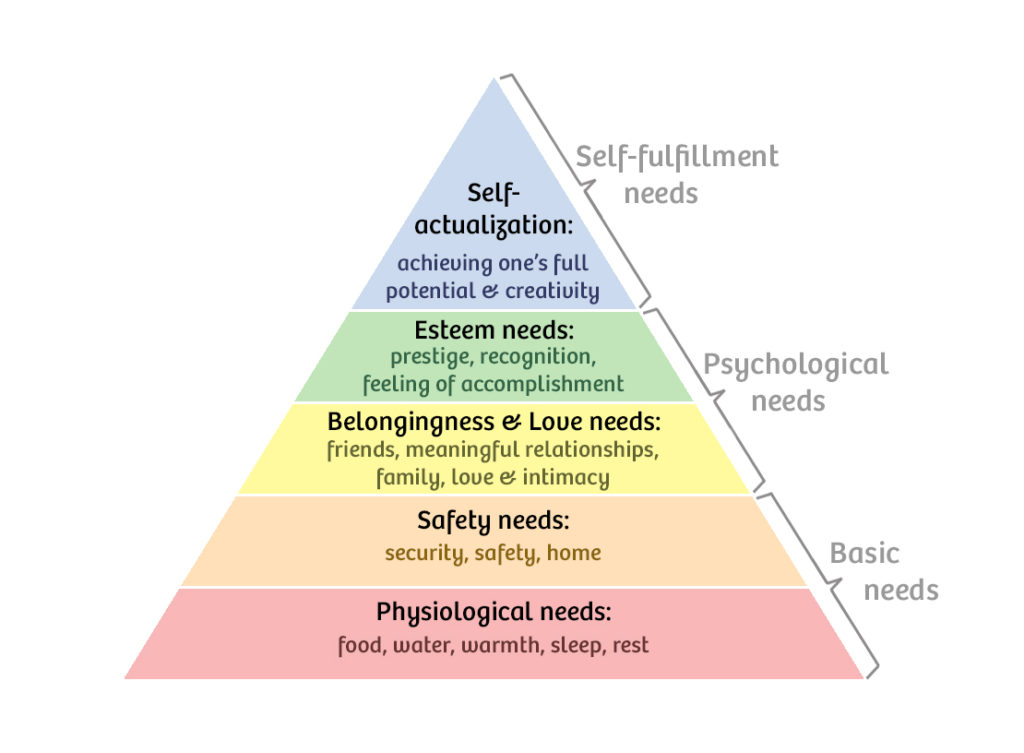What It Is:
The Hierarchy of Needs, often attributed to Abraham Maslow, is a psychological theory that describes a five-tier pyramid of human needs, often depicted as hierarchical levels. The hierarchy, from the most fundamental to higher-order needs, includes:
- Physiological Needs:
- Basic survival needs such as food, water, shelter, and other biological requirements.
- Safety Needs:
- The need for physical and emotional safety and security, including health and well-being.
- Love and Belongingness Needs:
- The desire for social connection, relationships, love, and a sense of belonging in a community.
- Esteem Needs:
- The need for self-esteem, recognition, achievement, and respect from others.
- Self-Actualization Needs:
- The pursuit of personal growth, self-fulfillment, and realizing one’s full potential.
How to Use It:
Using the Hierarchy of Needs in Agile Coaching:
- Team Member Well-being:
- Ensure that team members’ physiological and safety needs are met. Address concerns related to work environment, equipment, and any physical or emotional safety issues.
- Team Collaboration and Inclusion:
- Foster a sense of belonging within the team. Encourage collaboration, open communication, and a positive team culture to fulfill love and belongingness needs.
- Recognition and Appreciation:
- Acknowledge and appreciate team members’ contributions to satisfy their esteem needs. Recognize achievements, provide constructive feedback, and create an environment that values individual and collective efforts.
- Opportunities for Learning and Growth:
- Support opportunities for skill development, learning, and personal growth. This aligns with esteem needs and contributes to the self-actualization of team members.
- Individual and Team Goals:
- Align individual and team goals with the pursuit of self-actualization. Allow team members to contribute to project planning, decision-making, and creative problem-solving.
Applying the Hierarchy of Needs in Agile coaching involves recognizing and addressing the diverse needs of team members, fostering a supportive and inclusive team environment, and promoting opportunities for individual and collective growth. It can contribute to building a motivated and high-performing Agile software delivery team.
References:
- “A Theory of Human Motivation” by Abraham H. Maslow:
- Maslow’s seminal paper, published in 1943, outlines the Hierarchy of Needs. Reading the original paper provides an in-depth understanding of the theory.
- “Motivation and Personality” by Abraham H. Maslow:
- Maslow’s book expands on the Hierarchy of Needs theory and its implications for human motivation and behavior. It is a comprehensive resource for those interested in his work.
- Psychology Textbooks:
- Explore psychology textbooks that cover Maslow’s Hierarchy of Needs. These textbooks often provide insights into the application of the theory in various contexts.
Visit the Agile Coach’s Toolkit for more definitions, models, theorems and stuff.

